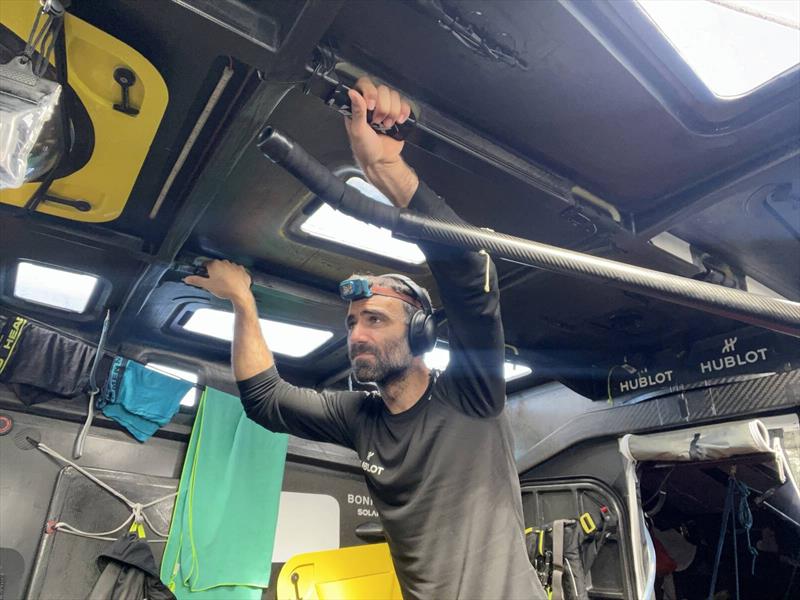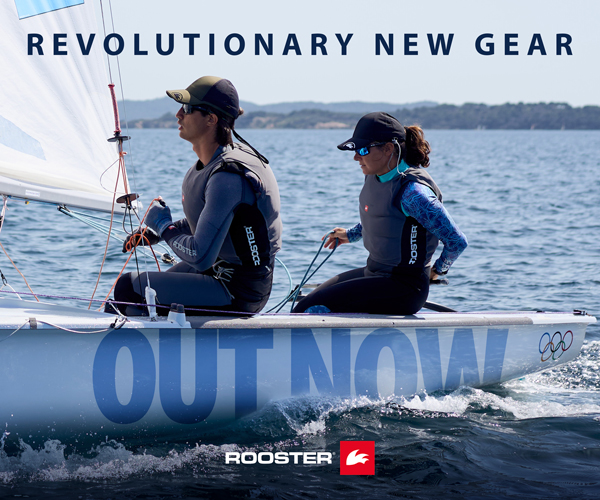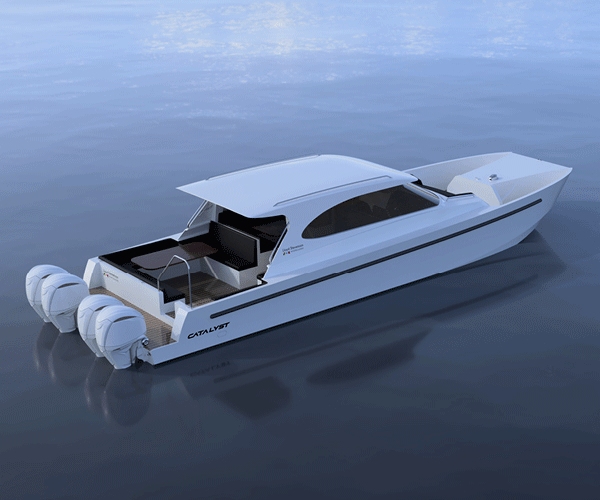
Vendée Globe Race Update for Thursday: Tension rises as transition phase begins
by Vendée Globe media 28 Nov 09:01 PST
27 November 2024

Sent from the Hublot during the Vendée Globe sailing competition on November 28 © Alan Roura


Currently led by Charlie Dalin (MACIF Sante Prévoyance), the top competitors in the Vendée Globe have now covered roughly a quarter of the solo circumnavigation course.
Although their passage to the Equator was slow, Dalin and his competitors now appear set to surpass Alex Thomson’s record of 8 days and 15 hours for the journey from the Equator to the Cape of Good Hope, established during the 2016 race. Current routing forecasts estimate that the leading skippers will pass this point around midday tomorrow, approximately a day faster for this segment of the route.
As the pace begins to slightly decrease, Dalin has seen his lead diminish. By Wednesday afternoon, the top four skippers were all within 40 miles of him as they approach one of the race’s most potentially challenging phases: the Cape of Good Hope and the Agulhas currents.
“The Cape of Good Hope poses the greatest difficulty due to strong winds and opposing currents, so it’s understandable for the skippers to be concerned,” warned Charles Caudrelier, winner of the Ocean Race and the ARKÉA ULTIM CHALLENGE-Brest, during today’s Vendée LIVE show. “The intense forces on both the boats and the skippers from recent days, combined with the proximity of their rivals, heightens the risk, knowing it can all change in an instant.”
Upcoming Decisions
Currently, skippers are contemplating their next moves and preparing as best as possible for the journey south, gearing up for their initial gybe—this will be their first major maneuver after nearly twelve continuous days and nights sailing on a port gybe.
“Since this morning, the sea has calmed and the wind has subsided a bit. The conditions are much more manageable compared to the past four or five days. It’s not fun to always be hanging on; a bit of relief is welcomed!” commented Nicolas Lunven (Holcim – PRB). “We’ve been on port tack since west of the Canary Islands, almost twelve days now. My right leg is beginning to feel more developed than my left! It will be good to finish this phase and advance to the next one.”
In the next few hours, the leaders will have to navigate a transition between their current depression and the Austral low-pressure systems moving eastward along the edge of the Arctic Exclusion Zone (EZA). For around 48 hours, Lunven and the leaders will first encounter significantly weaker winds before heading sharply south and then transitioning to an eastward course.
“Having a bit less stressful conditions for two days will let us rest, eat well, thoroughly inspect the boat, and service any minor issues that need attention,” Lunven added.
Attending to the Task List and Preparing for the South
Recovering from a challenging period marked by the severe damage to her J0 headsail, Switzerland’s Justine Mettraux (TeamWork – Groupe Snef) is also preparing for the southern journey. “I tried to rest a bit last night; it felt necessary, and my food intake has been fine. I feel good this morning, and it’s time to focus more on the race and our strategy. As we approach the Southern Ocean, I won’t be using the J0 sail much anymore, so I can switch to a smaller sail without being too affected by the loss of my J0.”
Mettraux added, “It’s still relatively warm on board, but the sea temperature is dropping, making everything feel a bit cooler, and you certainly don’t want your feet in the water, for instance.”
The boat is in good condition overall, with a few tasks I can tackle tomorrow during the lighter conditions throughout the day. I’ll strive to take full advantage of tomorrow to prepare the boat for what’s next.”
The skipper of TeamWork – Groupe Snef, like Sam Davies (Initiatives-Cœur), Boris Herrmann (Malizia – Seaexplorer), and Clarisse Crémer (L’Occitane en Provence), has also begun making necessary small gybes to navigate between the front to her north and the Saint Helena high to her south, all looking to stay with the best breeze—easier said than done, especially with light winds to the south and unstable winds to the north.
Same Plan
The plan remains similar for those trailing behind, including Damien Seguin (Groupe APICIL). He too will need to wait until the middle of the weekend to tap into the next low-pressure system. However, this new low will extend at least to the middle of the Indian Ocean, which should help him limit his distance loss to the leaders.
What about the majority of the fleet led by Arnaud Boissières (La Mie Câline)? Currently, he continues to sail in a mostly single-file line towards the southern tip of the African continent. As the leader of this subsequent group, he might cross the Cape of Good Hope by evening or on Wednesday—around five days behind the leaders, who are projected to pass the longitude of the famous South African landmark starting tomorrow midday.
From this evening, the leading trio, consisting of Charlie Dalin (MACIF Santé Prévoyance), Sébastien Simon (Groupe Dubreuil), and Thomas Ruyant (VULNERABLE), should begin to feel the influence of the Agulhas Current, one of the most potent and consistent surface currents globally. “This is a point of concern for us because it can reach speeds of 3-4 knots or even more in certain areas. The real issue is that after the Cape of Good Hope, it begins to swirl a bit, making navigation quite tricky.”
“It’s challenging to fully understand it,” explained Lunven, who is meticulously studying the situation, given that the current opposes the wind, producing sometimes destructive boat-breaking waves and even rogue waves up to 30 meters high.
Learn More…


